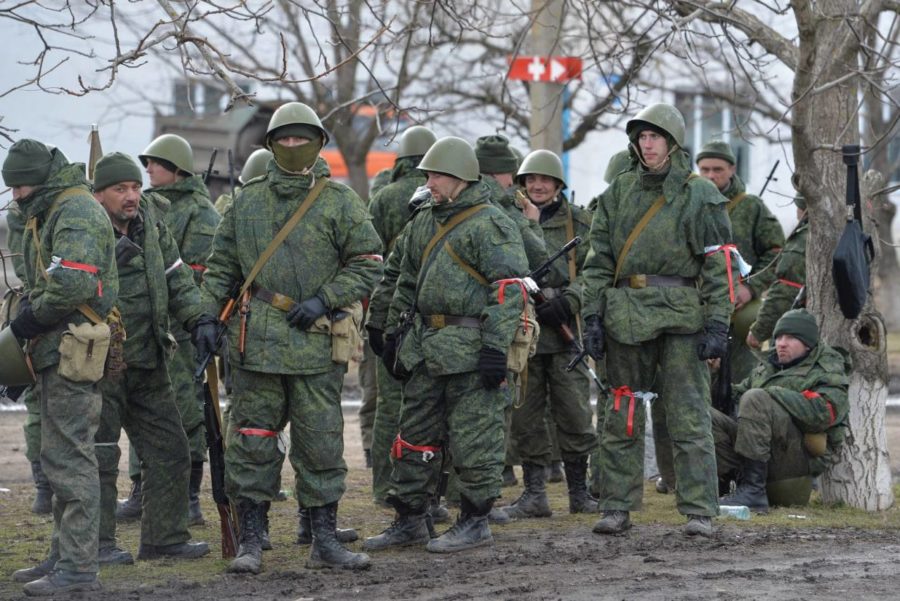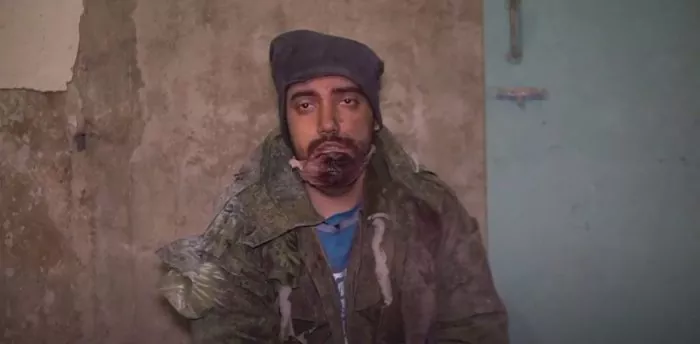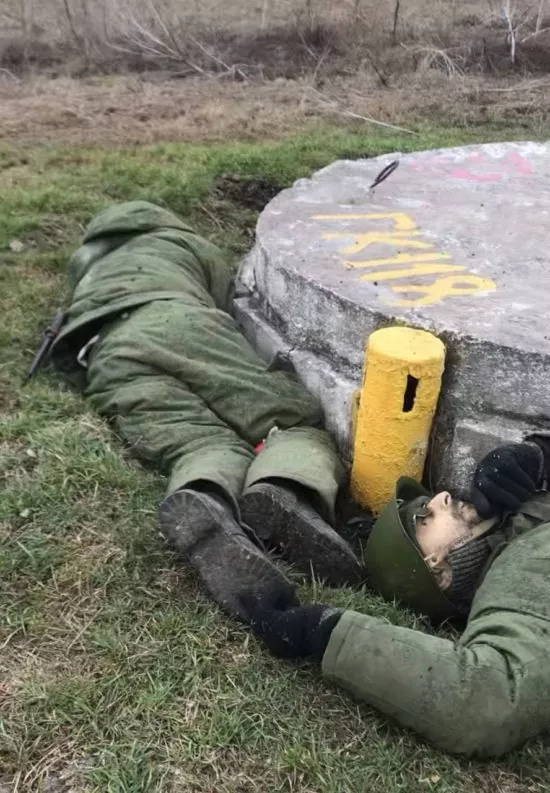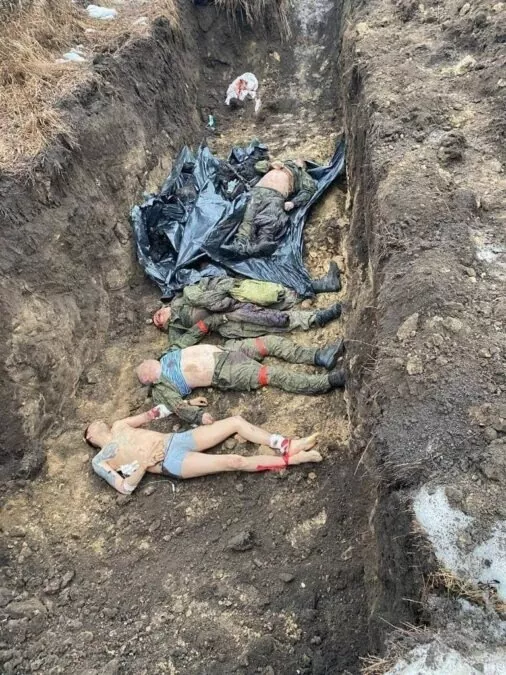A Russian PoW having Ukrainian citizenship and even speaking Ukrainian is a fairly common occurrence in the ongoing war. Shortly before Russia’s full-scale invasion of Ukraine, the occupation authorities of Luhansk and Donetsk started a general mobilization of locals to the armies of the so-called “LNR” and “DNR,” then they threw these conscripts into battles in the Donbas and other regions of Ukraine.
In his article published on Novinarnia, military historian Mykhaylo Zhyrokhov discovers why Russia needed these troops, and what is their value, fate, and status. Here are the major takeaways from his piece.
Mobilization in ORDLO
In early 2015, the Russian occupation authorities of ORDLO (Russian-occupied areas of Luhansk and Donetsk oblasts) reformed multiple Russian-supported irregular paramilitary structures into two contract armies, the 1st and 2nd army corps of the “people’s militia” in Donetsk and Luhansk respectively. Russian official documents mention these military structures as “reserve formations of motorized infantry troops of the 12th Reserve Command of the Southern Military District of the Armed Forces of the Russian Federation.”
These rather small-scale armies reinforced by officers and troops from Russia were sufficient in the WWI-like positional war in the Donbas region, and with the closure of most industrial enterprises in the occupied territory, local men were often quite willing to join the “corps.”
On the eve of Russia’s full-blown invasion on February 19, 2022, the occupation administrations of the so-called Luhansk and Donetsk “people’s republics” (“LNR” and “DNR”) announced a general mobilization, under two decrees local men aged between 18 and 55 were not allowed to travel outside the “republics.” Later both puppet governments raised the mobilization age threshold to 65.
Moreover, according to Ukrainian Ombudswoman Lyudmyla Denisova, the Donbas women aged between 18 and 45 may also soon become subject to the “LDNR” mobilization to assume non-military positions in the military units, such as accountant, cook, driver, and so on.
Forced conscription: how Russia wipes out the male population of occupied Donbas
In the waves of forced mobilization, people were often literally caught on the streets and — despite their reluctance, lack of military experience, health problems — sent en masse to the front to fight against Ukraine.
As a result,) potential conscripts try not to leave their homes at all now. For example, according to Donetsk residents, pizza delivery people are now staffed entirely by girls and women.
https://twitter.com/Gerashchenko_en/status/1526109731231776768
17 “LDNR” regiments
Mykhaylo Zhyrokhov referring to his sources says that the Russian command decided to form 17 motor-rifle regiments of about 26,000) conscripts from Donetsk and Luhansk oblasts. He managed to establish the numbers of 12 regiments out of 17:
- 103rd, 105th, 107th, 109th, 113th, 123rd, 125th, and 127th – in the occupied Donetsk Oblast;
- 202nd, 208th, 204th, and 254th – in the occupied Luhansk Oblast.
However, Zhyrokhov says, indirect data indicate that the mentioned regiments structurally comprise one to five battalions, and each such battalion averages at about 300 troops. If so, then there is a total of 5,100-25,500 troops in all 17 “LDNR” regiments manned by the mobilized locals.
In mid-April, the Main Directorate of Intelligence of Ukraine’s Armed Forces reported that Russia’s plan to mobilize 26,000 men in the occupied parts of Luhansk and Donetsk oblasts had failed.
“It should be noted that since the Russians in the previous seven years of war didn’t plan to expand the ‘contingent’ of the Army Corps 1 and 2 at the expense of the locals, both weapons and protective gear (bulletproof vests and helmets) for the new regiments were simply non-existent. Therefore, the search for something suitable in the army depots of the adjacent Rostov Oblast began as a matter of urgency,” Mykhaylo Zhyrokhov says.
Indeed, most of the Russian footage showing the mobilized from Luhansk and Donetsk show them almost always lacking the bulletproof vests, and having either no helmet at all or wearing the SSh-60 or SSh-68 without any additional layers of protection — the Soviet Army’s 1960 or 1968 model of the “steel helmet.”

Also, the Donbas conscripts have been armed only with small arms, often obsolete, without any grenade launchers or even machine guns in their disposal.
“Cannon fodder”
According to the author’s estimates, only 5-10% of the personnel of such regiments staffed by mobilized ORDLO residents have combat experience. Accordingly, the combat value of the formations has been low and they have been primarily used as “cannon fodder.”
Russia uses mobilized Donbas men as cannon fodder for war in Ukraine – Ukrainian intel
Here is a typical story of a PoW — Ruslan Khalilov, a resident of Snizhne, Donetsk Oblast, mobilized by Russia to fight against Ukraine on 22 February:
“I was called up for military service in unit 1123 (4th Company, 1st Platoon). Before that I was an ‘ordinary citizen,’ worked as a chief specialist in the ‘social security department’ of the local ‘administration,’ was responsible for checking the allocation of social assistance. The order to start the mobilization came from Moscow in order to collect in the ‘DNR/LNR’ people who can be used without regrets, and can make finding the positions of the Ukrainian army easier. I had a helmet, bulletproof vests were not given, first aid kits were distributed only three or four days before we arrived here. A few days ago we were brought to a village near Mariupol, we went to the Illich plant, walked 300 meters there, and were caught, I was the only survivor.”

The Ukrainian Azov Regiment had repeatedly stated that the Russians were using the ORDLO mobilizees in Mariupol as “living bait” to identify the positions of the Armed Forces.
According to the data available to Novynarnia, as of the end of April, most of the newly formed “LDNR regiments” fought in Kharkiv and Kherson oblasts, and by the beginning of April in Sumy Oblast as well.
In one of the videos circulating on social media, the forcibly mobilized Donetsk residents complain about the Russian command and ask to return them home. The “DNR” soldiers told in the video that they were illegally brought to Russia without documents, then the Russians threw them into a battle in Ukraine’s Sumy Oblast against the Ukrainian artillery while they themselves had only assault rifles.

Russian and “LDNR” media usually avoid the uncomfortable topic of the losses among the mobilizees as such local recruits die by the hundreds, having no prior combat experience. A telling example in this regard is the mobilized cultural professionals, who naturally are inexperienced in handling weapons.
For example, jazz musician Mykola Zvyagintsev who played in the Donetsk State Academic Philharmonic orchestra and the brass band Septet Jazz was mobilized in February and died during the siege of Mariupol in early April. In the same way, the orchestral musicians Oleksandr Bobrovskyi and Pavlo Makhno died for nothing, as well as Serhiy Rudov, the concertmaster of the Donetsk Drama Theater.

Local history expert Anatoliy Zharov, who found the grave of Donetsk founder John Hughes in London, and others were also killed. Many of those deceased were the supporters of “DNR/LNR,” but apparently didn’t rush to fight prior to the mobilization.
There is no complete picture of the death toll among the Donbas forced conscripts since the occupation authorities of Luhansk and Donetsk don’t release any stats on the matter. However, indirect anecdotal evidence suggests the staggering number of those killed in action.
Also, the Russian command treats the bodies of those killed ORDLO mobilizees inappropriately, prioritizing the evacuation of the corpses of the Russian military from the battlefields over the dead Donbas locals. The “disposable soldiers” of “LNR/DNR” often end up where they were killed or in mass graves.

Russia’s forcible mobilization in the Donbas is a war crime
The forced conscription of the residents of the Russian-occupied territories is one of many war crimes committed by the Russian Federation. Article 51 of the Geneva Convention Relative to the Protection of Civilian Persons in Time of War reads,
“The Occupying Power may not compel protected persons to serve in its armed or auxiliary forces. No pressure or propaganda which aims at securing voluntary enlistment is permitted.”
In 2014-2021, the Russian propaganda touted the service in the occupation armies among the Donbas locals while demonizing their fellow countrymen in the rest of Ukraine. Since late February 2022, all local men aged 18-65 have been subject to the ongoing forced mobilization in ORDLO.
Meanwhile, under Ukrainian legislature, such conscripts may be persecuted for participating in illegal armed groups, unless they report the fact of the forcible conscription. Since most of them have been often banned from using mobile phones, many “LDNR” mobilizees have no opportunity to inform the Ukrainian law enforcers even if they would like to do so. The criminal liability of the forced conscripts who would survive will be one of many issues that Ukraine will have to handle after the war.
Read more:
- Forced conscription: how Russia wipes out the male population of occupied Donbas
- Russia uses mobilized Donbas men as cannon fodder for war in Ukraine
- Russo-Ukrainian war, day 48: mobilization in Luhansk Oblast
- Russo-Ukrainian war, day 40: Russia begins hidden mobilization, prepares offensive in Donbas
- War in Ukraine, Day 17: covert mobilization in occupied Ukraine








